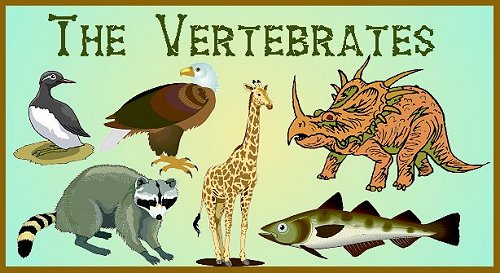Vertebrates – General Science Notes – For W.B.C.S. Examination.
মেরুদন্ডী প্রাণী – সাধারণ বিজ্ঞান নোট – WBCS পরীক্ষা।
Vertebrates are the animals possessing backbones. Some include jawed vertebrates and jawless fish. For example sharks, ray fish, and bony fish. A bony fish named clad also further falls into the class of amphibians, reptiles, mammals, and birds.Continue Reading Vertebrates – General Science Notes – For W.B.C.S. Examination.
Extant vertebrates vary in size beginning from the frog species named Paedophryne amanuensis to the blue whale. Amphibians are species that live in the land and move to water for breeding. Reptiles are covered by scutes. Mammals are terrestrial, aquatic or aerial. Birds are covered with feathers and have streamlined avenues.
- Organ Level of Organization: Animal tissues comprising of similar capacity are classified into shaped organs. Every organ is definite for particular capacity. For example Platyhelminthes.
- Tissue Level of Organization: Animal cells displaying division of exercises among themselves.Cells performing the same function cooperate to form tissues.
- Organ framework Level of Organization: The organ framework level of organization are displayed in those organisms where organs define the shape of functional frameworks and each framework is with a distinct physiological capacity.
- Cellular Level of Organization: This organization consists of animals with cells which are formed as free cell lumps.
Vertebrate, also called Craniata, any animal of the subphylum Vertebrata, the predominant subphylum of the phylum Chordata. They have backbones, from which they derive their name. The vertebrates are also characterized by a muscular system consisting primarily of bilaterally paired masses and a central nervous system partly enclosed within the backbone.Although the vertebral column is perhaps the most obvious vertebrate feature, it was not present in the first vertebrates, which probably had only a notochord. The vertebrate has a distinct head, with a differentiated tubular brain and three pairs of sense organs (nasal, optic, and otic). The body is divided into trunk and tail regions. The presence of pharyngeal slits with gills indicates a relatively high metabolic rate. A well-developed notochord enclosed in perichordal connective tissue, with a tubular spinal cord in a connective tissue canal above it, is flanked by a number of segmented muscle masses. A sensory ganglion develops on the dorsal root of the spinal nerve, and segmental autonomic ganglia grow below the notochord. The trunk region is filled with a large, bilateral body cavity (coelom) with contained viscera, and this coelom extends anteriorly into the visceral arches. A digestive system consists of an esophagus extending from the pharynx to the stomach and a gut from the stomach to the anus. A distinct heart, anteroventral to the liver, is enclosed in a pericardial sac. A basic pattern of closed circulatory vessels is largely preserved in most living forms. Unique, bilateral kidneys lie retroperitoneally (dorsal to the main body cavity) and serve blood maintenance and excretory functions. Reproductive organs are formed from tissue adjacent to the kidneys; this original close association is attested by the tubular connections seen in males of living forms. The ducts of the excretory organs open through the body wall into a cloacal chamber, as does the anus of the digestive tract. Reproductive cells are shed through nearby abdominal pores or through special ducts. A muscular tail continues the axial musculature of the trunk.
Approximately 45,000 living species constitute the vertebrates. Species of several classes are found from the high Arctic or Antarctic to the tropics around the Earth; they are missing only from interior Antarctica and Greenland and from the North Polar ice pack. In size, vertebrates range from minute fishes to elephants and whales (of up to 100 tons), the largest animals ever to have existed. Vertebrates are adapted to life underground, on the surface, and in the air. They feed upon plants, invertebrate animals, and one another. Vertebrate faunas are important to humans for food and recreation.
Please subscribe here to get all future updates on this post/page/category/website


 +919674493673
+919674493673  mailus@wbcsmadeeasy.in
mailus@wbcsmadeeasy.in







































































































